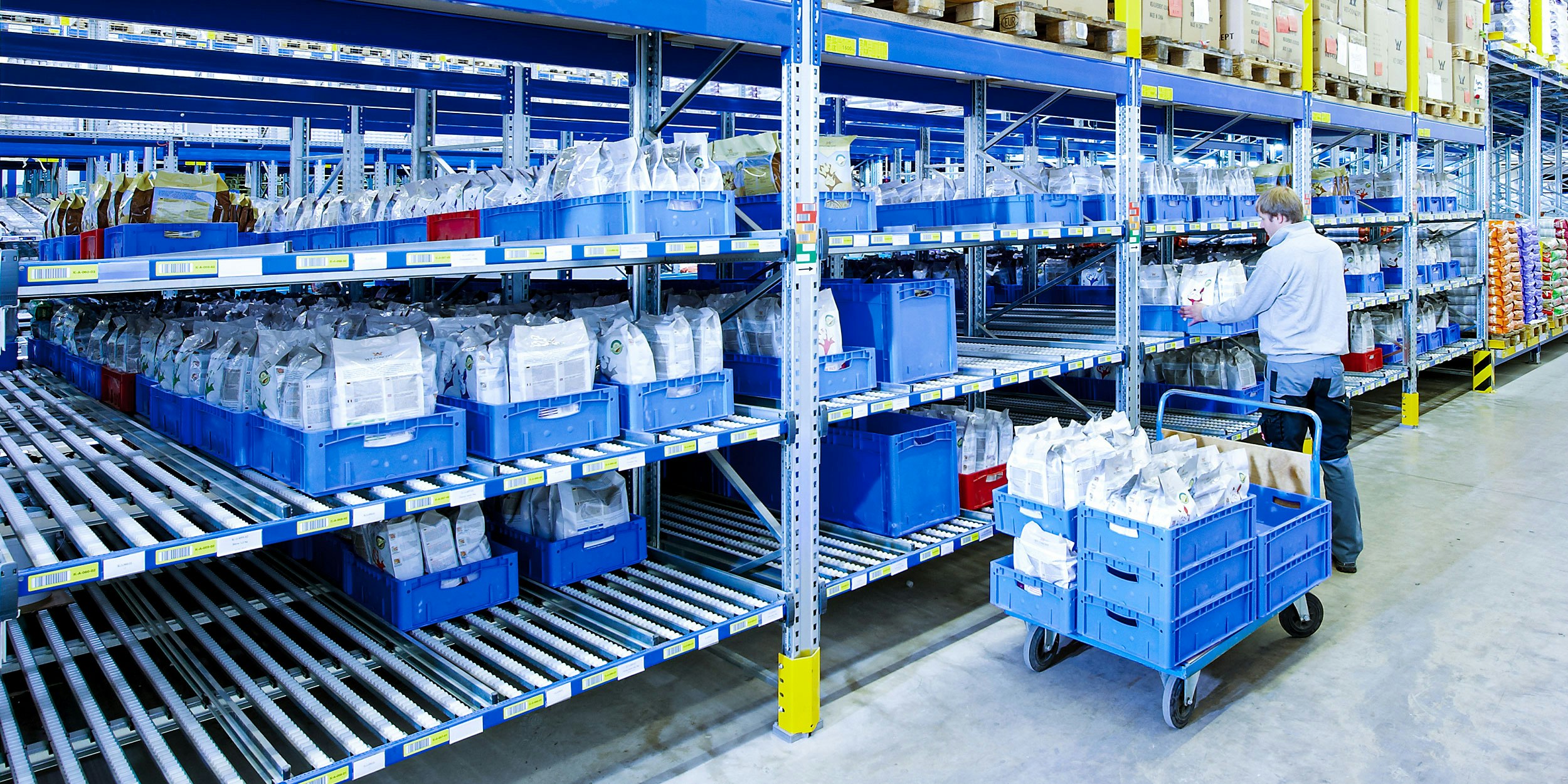Perpetual inventory in the warehouse

Checking stock levels in real time throughout the year enables perpetual inventory or real-time-based inventory to be adopted by a company. While the conventional manual or physical inventory check on a certain date provides information about the stock of goods and shortages on that particular day, the (automated) perpetual inventory approach allows a real-time-based recording of stock information such as location and quantity.
Advantages of perpetual inventory
In addition to providing continuous information about stock levels, perpetual inventory also usually leads to a minimisation of shortages in the company. This means that all orders can be processed and shipped on time, which in turn leads to high customer satisfaction and often repeat orders. Real-time inventory can also help develop and implement better logistics or route optimisation for item storage and retrieval in the warehouse, which also optimises the entire subsequent supply chain. Monitoring stock levels and checking inventory in real time leads to a better understanding of stock trends and can lead to categorising stock into fast, medium and slow-moving items. This categorisation can be then used to improve the layout of storage and picking areas within a warehouse, and, potentially also lead to better procurement strategies being developed. In general, real-time inventory results in an optimisation of the processes in the warehouse and thus potential cost savings.
Possibilities of implementing a real-time based inventory
Perpetual inventory using a warehouse management system (WMS) will only be as good as the quality of the available data. However, the stock quantities of goods in the inventory management system and in the physical warehouse often differ. Events such as accidental picks from the wrong location, incorrect scans, inadequate processes or unauthorised stock removal can often lead to inaccurate stock figures.
In general, a WMS is operated by employees at radio terminals or desktop computers, whereby the employees in the warehouse record the stored and retrieved goods via barcodes, QR codes or RFID tags using scanners (1). RFID technology in particular plays out its strengths in the complete inventory of goods in real time and in bulk recording. The WMS follows certain warehouse strategies and determines the storage locations. Even during order picking, the removed goods are recorded and booked in the WMS. A modern paperless picking system or process such as pick-by-light or pick-by-voice can minimise stock shortages (2).
Other possibilities for inventory management and perpetual stocktaking are, for example, systems with real-time location system and video recording and systems with unit-precise weight measurement by sensors at storage locations and integrated radio technology.
Real-time inventory with RFID
With RFID (Radio Frequency Identification), goods can not only be automatically identified without contact using electromagnetic waves, but can even be located using transponders. The RFID solution therefore consists of an RFID transponder (with antenna coil, circuits and memory) with an identification number or an Electronic Product Code (EPC), a reader via which the information can be read and a transmitter unit for data transmission (3, 4). For goods tracking and perpetual inventory, the position data and the EPC are transmitted to the reader and then to the WMS. A major advantage of RFID technology for perpetual inventory in companies is the simultaneous bulk recording of multiple items over longer distances and the resultant efficiency gain. In addition, the data carriers are rewritable. Containers, for example, can be marked with a new order number depending on their use without having to print a new label. Completely new areas of application can be covered with RFID. For example, components in the automotive industry can be identified over their entire service life and each processing step can be documented on the transponder. Since RFID technology and the fitting of transponders to each item is relatively expensive compared to barcodes and QR, it is mainly suitable for the tracking of high-value goods.
Real-time location system and video recording
Another solution for real-time-based inventory in companies and the tracking of stock is the use of mobile scanners with RFID transponders and so-called anchor transponders in the warehouse (5). The anchor transponders take on the role of GPS satellites. The position of the respective item can be determined in real time from the runtime of the radio waves between the scanner and the anchor transponders. A big advantage is that only the scanners have to be equipped with transponders and not each individual product, which would cause high costs. A video system is also installed for seamless tracking of the goods in the company. The video recordings are linked to the scanning and locating data. The entire video material can thus be automatically filtered according to the position data and the search drastically shortened. In this way, shortages in the company's stock can be quickly uncovered.
Perpetual inventory with weight sensors
Another practical example of stock management and real-time inventory is the TeDaLoS solution with weight sensors at storage locations, integrated radio transmission to a cloud software and online display (6). A sensor unit consists of the sensor technology for precise weight measurement, the radio technology and the energy supply. In practice, the units can be optimally positioned on any load carriers, storage locations or even under containers. Around 12,000 data points are generated per day and storage location, which are decoded, interpreted and validated by the cloud software. The data or the stocks can be viewed via smartphone or from the home office. The inventory management and perpetual inventory solution offers many advantages over traditional physical inventory, such as triggering automatic orders when only a specified minimum quantity of an item is left. With Kanban racking, reordering of stock can be done just-in-time. In the event of stock shortages and suspected theft, security can also be called automatically. If the solution is installed at the company's customers, it can enable predictive demand assessment. Since the demand and type of item is reported as soon as the goods are consumed, service and logistics can be optimised based on this. TeDaLos technology can be quickly and easily retrofitted in warehouses or on load carriers and storage locations and immediately provides stock, consumption and position data for permanent inventory. Physical stocktaking thus becomes a thing of the past.
Literature
1 Tracking in logistics: The advantages of RFID, QR and barcode, Brother International GmbH, Link
2 BITO briefings, Warehouse order picking, Link
3 BITO briefings, white paper, Tracking in intralogistics or in the warehouse, Link
4 Goods tracking with the Xspan Rain Rfid Gateway from Impinj, Link
5 Seamless goods tracking with Real-time Location System (RTLS) and video, Solcon Systemtechnik GmbH,Link
6 BITO briefings, Automated Inventory Control in Manual Warehouses, Link

